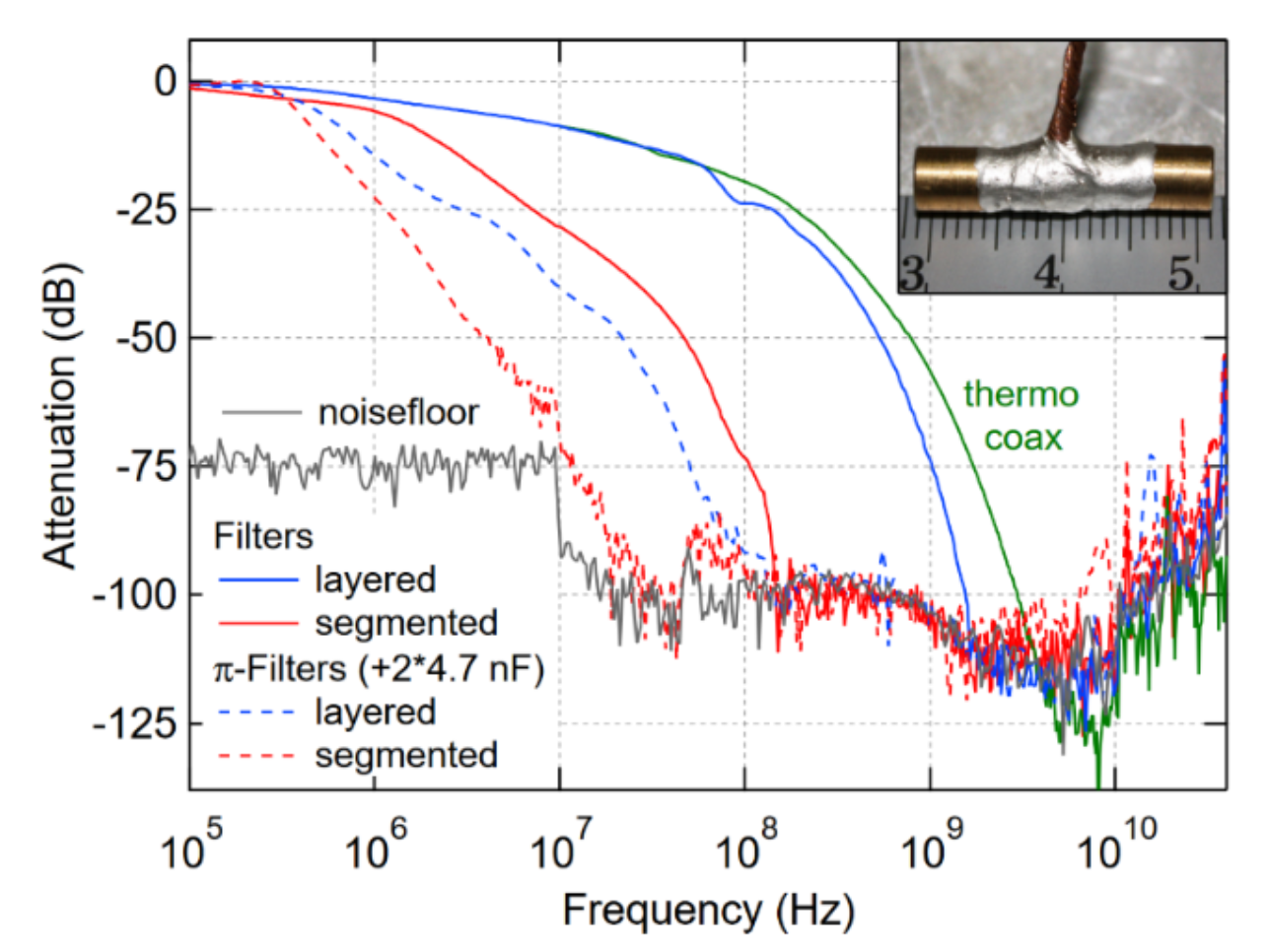Background
Since the first demonstration of high-quality spin qubits in heterostructures of silicon and germanium, many milestones have been achieved, making it an interesting platform for scaling up quantum computers. In recent years, holes in germanium quantum wells within these structures have emerged as a strong competitor in the field of spin qubits. To operate these qubits, they must be cooled down close to absolute zero temperature. To control and read-out the state of individual qubits, high frequency coaxial cables are routed down into dilution cryostats to the sample at the coldest temperature stage. Contrary to conventional coaxial cables, thermocoax does not have to be attenuated at each temperature stage to lower the power dissipation to the sample stage, owing to their “lossy” nature, leading to a continuous thermalization. Therefore, they include noise filtering, potentially allowing for very sensitive current measurements at low frequencies without additional filters in line. This can be seen in Figure 11. Depending on the performance of these wires, they pose a great candidate for high frequency read-out schemes due to the required frequency range of a few 100 MHz. These measurements are conducted by sending an oscillating signal to the sample and amplifying the reflected signal at cryogenic temperatures and at room temperature2.
 Comparison of differently filtered wires to thermocoax with a cutoff frequency in the GHz range.
Comparison of differently filtered wires to thermocoax with a cutoff frequency in the GHz range.
Your Task
You will work on novel, so far untested, coaxial cables in a dilution refrigerator, the key element for enabling solid state qubit research. We want to investigate their bandwidth, noise characteristics and power dissipation to evaluate them as a viable option for read-out lines for large spin qubit arrays. We further intend to try time-based reflectometry for an in-depth analysis of the material. Depending on the progress of our qubit samples you will work side by side with your supervisor on the design and implementation of a high frequency read-out setup with the goal of enabling single-shot qubit readout. This can further be used to characterize material properties, crucial for the future development of Germanium as a host platform for spin qubit devices.
What you can Expect
- Modelling and measurement of high frequency electronics
- Electronics in cryogenic environments
- Working principles and working with cryostats
- State-of-the-art (spin) qubit measurement techniques
- Measurement techniques for observing quantum mechanical effects
Required Skills
- Self-motivated, independent working style
- Strong background in quantum mechanics and solid state physics
- Affinity/experience in working with high frequency electronics
- Basic python knowledge
- Ability to communicate openly and efficiently with people of a varied background
What we offer
- Workplace, laptop for duration of the project.
- Student assistant contract via RWTH, or equivalent via FZ Jülich contract
- Young, international, dynamical workplace, located on Campus Melaten (Campus- Boulevard 79)
- Exposure to leading research activities in quantum technology
Supervision
- Dr. Vincent Mourik, FZ Jülich, PGI-11 v.mourik@fz-juelich.de
- Lino Visser, FZ Jülich, PGI-11 l.visser@fz-juelich.de
References
-
Christian P. Scheller, Sarah Heizmann, Kristine Bedner, Dominic Giss, Matthias Meschke, Dominik M. Zumbühl, Jeramy D. Zimmerman, and Arthur C. Gossard, Silver-epoxy microwave filters and thermalizers for millikelvin experiments, Appl. Phys. Lett. 104, 211106 (2014) ↩
-
Y.-Y. Liu, S.G.J. Philips, L.A. Orona, N. Samkharadze, T. McJunkin, E.R. MacQuarrie, M.A. Eriksson, L.M.K. Vandersypen, and A. Yacoby, Radio-Frequency Reflectometry in Silicon-Based Quantum Dots, Phys. Rev. Applied 16, 014057, 2021 ↩